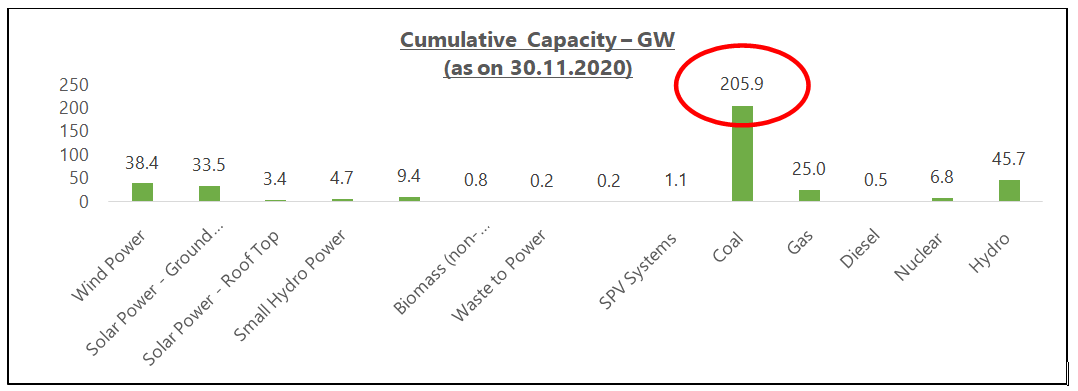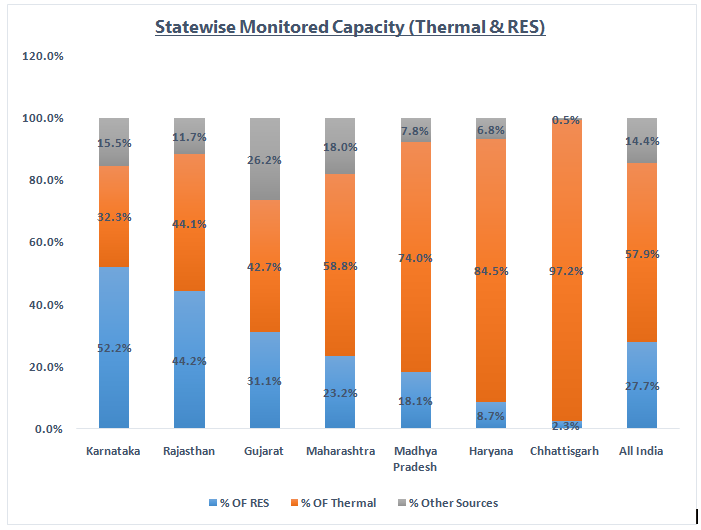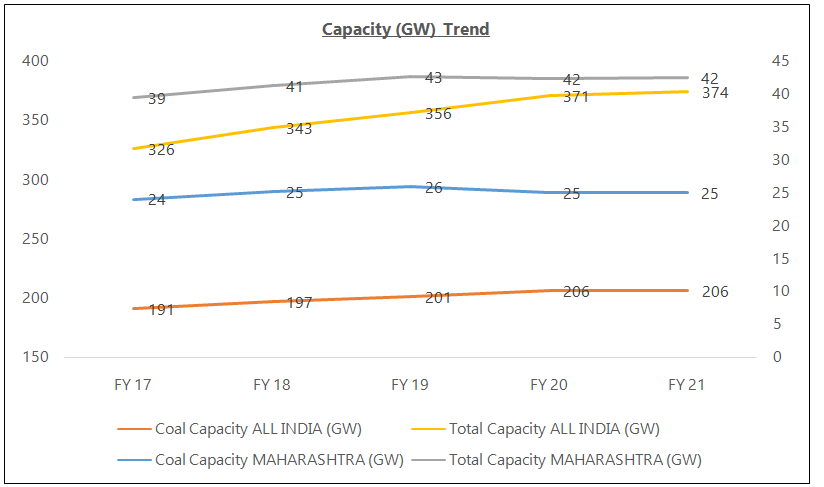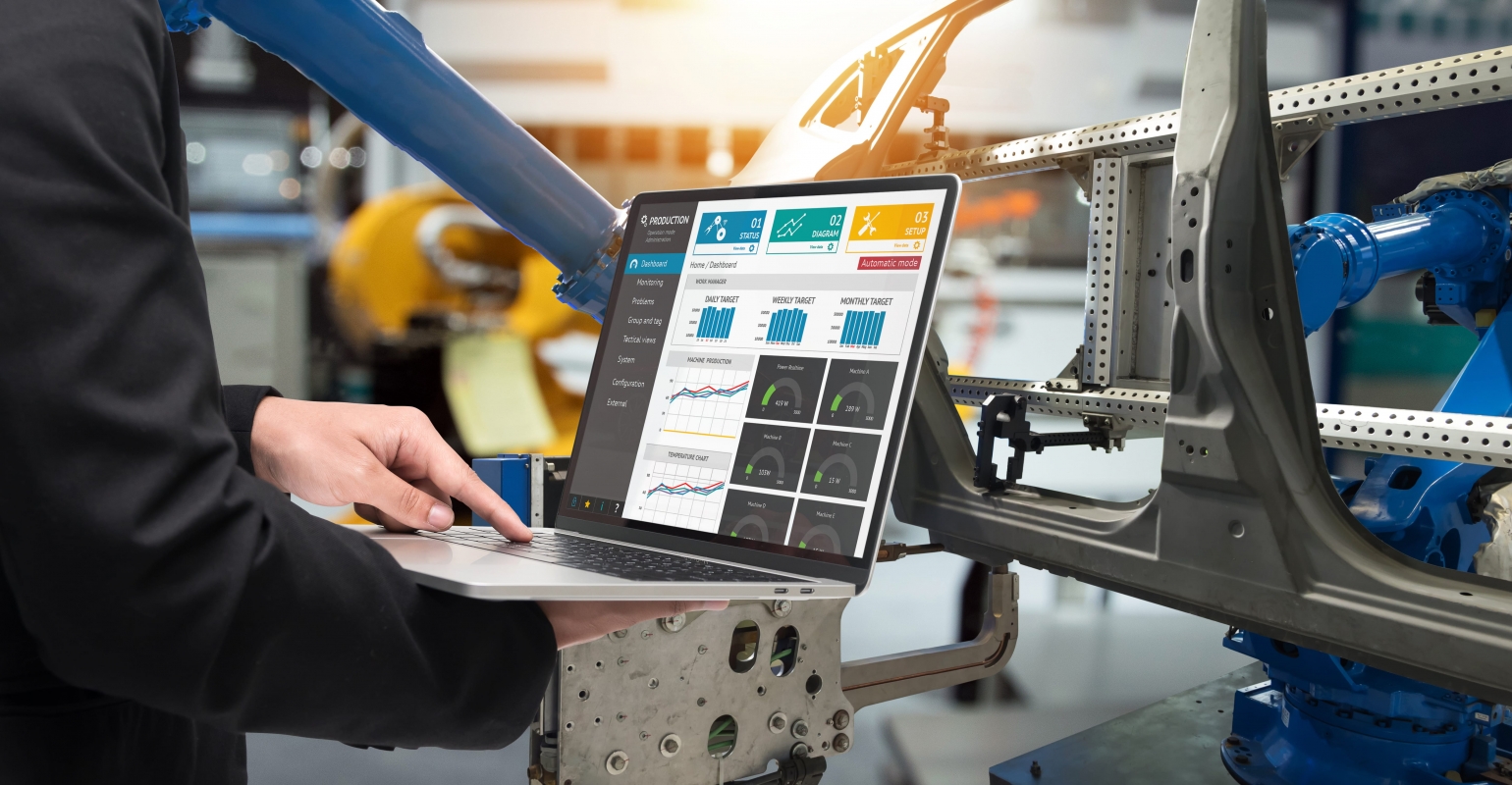Thermal generation might continue to experience rapid technological disruptions in the years to come but will remain one of the major contributors to electricity generation in India till 2050. Thermal power plants have already begun adopting technological changes in their fleet to cope with rapidly changing grid demands due to the rising penetration of intermittent renewables generation mainly solar photovoltaic and wind generation. To meet the intermittency of Renewable Energy (RE) generation, thermal is anticipated to play a major role in grid balancing.
From chart 2 below, it can be observed that thermal generation contributes 55% whereas RE contributes 25% in installed capacity. However, RE contributes only 10% to the overall generation. 90% of the demand is being met by conventional sources such as thermal, gas, nuclear & conventional hydro. Among the conventional sources, thermal contributes to fulfilling the maximum demand.
As the transmission network has reached almost all the parts of the country and with the establishment of a nationwide synchronous power grid, thermal generation will play a significant role as a major contributor towards electricity grid stability along with grid-connected renewable generation (solar & wind) in the years to come in filling the demand gap.
Chart 1: Source wise Cumulative Capacity

Chart 2: Source wise % Contribution

Looking at state-wise monitored capacity across major industrial states of India, thermal is still one of the major contributors. With increasing urbanization & industrialization across India & intensive energy requirements for some of the major heavy industries, the reliance on thermal power for round the clock operations will become extremely necessary in years to come.
Chart 3: Current State wise & All India Monitored Capacity

Chart 4: State wise Monitored Capacity

Chart 5: State wise Monitored Capacity

Conclusion:
For the last 4 years (starting FY 15-16), the average Maharashtra GDP growth rate was 10.3%.
32% of this growth has been contributed by industrial activities whereas 50% by the service sector. Since a good amount of GDP growth is coming from industrial activities & consistently GDP is growing, electricity demand is expected to have similar growth in Maharashtra. In the years to come, it might so happen that alternate environmentally benign fuels such as biomass and green hydrogen may play a crucial role in the thermal power generation. Besides, further promising “general fusion technologies”, which may replace coal-fired boilers, might continue to use an existing steam turbine, generator & associated auxiliaries for power generation.
Such alternate fuels and promising new technologies might provide much-needed continuity for the usage of existing thermal assets with some modifications and help in flexible operations of thermal units.
Shri C P Sahoo, Head Thermal (O&M)–Adani Power Limited with Chitti Babu Vakati and Rajesh Deoli




